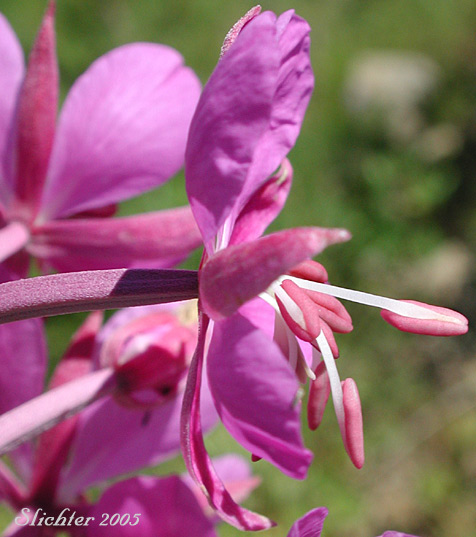

 The
photo at right shows the underside of the flower of fireweed, and makes evident
the narrow, purplish sepals which are shorter than the petals of this species.
The
photo at right shows the underside of the flower of fireweed, and makes evident
the narrow, purplish sepals which are shorter than the petals of this species.
Fireweed is an attractive flowered, simple stemmed weed or wildflower of disturbed places. Its rhizomatous roots as well as the many downy seeds that are produced help this perennial spread. It may attain a height of up to 3 meters. The numerous leaves are alternate on the stems, narrowly lanceolate, and subsessile, measuring up to 15 cm in length.
The inflorescence is a terminal raceme of many flowers. Individual petals are rose to purple in color, though white individuals may occur. The 4 petals may measure from 8-20 mm long. The 4 sepals are narrowly lanceolate and about 25% shorter than the petals. The stamens are slightly shorter than to nearly equal in length to the stigma, which is cleft into 4 long lobes. The fruits are long, thin capsules which emit downy seeds which are capable of being long distances through the air.
The species is an important plant for honey producers, and is useful for reconditioning soils disturbed by fires, road building or other actions of human kind.
Fireweed is a wildflower of disturbed places, including highway and railroad embankments, disturbed fields, and clearcuts or old forest fire burns.
Fireweed is found from Alaska south to California, and eastward to the Atlantic coast.
In the Columbia River Gorge, it is found between the elevations of 100'-4500' throughout the gorge.
